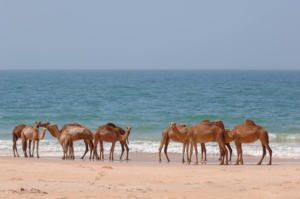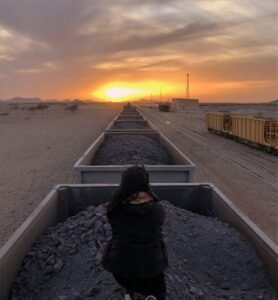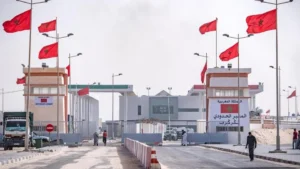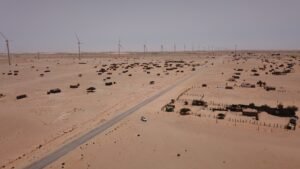Travelling from Nouadhibou to Dakhla by land is an adventure that requires a minimum of preparation. The border between Mauritania and Morocco, at PK55, is an essential passage to Dakhla. But between customs, formalities, No Man’s Land and your choice of means of transport, the journey can be more or less smooth, depending on the decisions you make.
This guide explains how to cross the border stress-free, detailing the different options for this journey, whether by private car, bus or shared cab.
From Nouadhibou to the Mauritanian border: first stage

To leave Mauritania, you first need to reach the PK55 border post, located 60 km from Nouadhibou town center. This stretch is relatively straightforward, whether you drive your own vehicle or use a shared cab.
If you have your own car, you’ll be on your way in no time. However, you’ll need to take out special insurance for driving in Morocco, either at the border or beforehand with your insurer.
Without a car, the most common way to reach the border is by shared cab. Cabs leave Nouadhibou when they are full, which means that waiting times can vary. In general, the journey takes about an hour.
Once there, you have to pass through the Mauritanian checkpoints, which are usually very quick. After that, all that’s left to do is to cross one of the most peculiar areas of this journey: No Man’s Land.
No Man’s Land: a special passageway
The No Man’s Land between Mauritania and Morocco stretches for four kilometers. Until a few years ago, this road was considered dangerous, as it was frequented by traffickers and bandits. Today, the Mauritanian army and Moroccan gendarmerie keep a constant watch on it, and the main road is relatively safe.
But one thing hasn’t changed: this stretch doesn’t belong to either country. So there is no official transport to cross it.
The challenge here is to find a cab willing to take you as far as Guerguerat, the Moroccan border post on the other side. It’s common for cabs to be waiting outside the Mauritanian post, but availability and prices can vary depending on how busy it is.
Once you’ve found a cab, the crossing is a breeze. We pass carcasses of abandoned cars and traces of a more chaotic past. But if you stay on the official road, there’s no risk at all.
Arrival in Guerguerat: entry to Morocco
On reaching Guerguerat, you officially enter Moroccan territory. Here, controls are more rigorous and can take some time. If you’re traveling by private car, you’ll need to pass a scanner and declare your vehicle. This is the step that slows down passage the most.
For those arriving by shared cab, formalities are simpler: presentation of passport, fingerprinting and entry stamp.
Just over the border, there are exchange offices where you can convert your ouguiyas into Moroccan dirhams. This can be useful, as ATMs are not always immediately available.
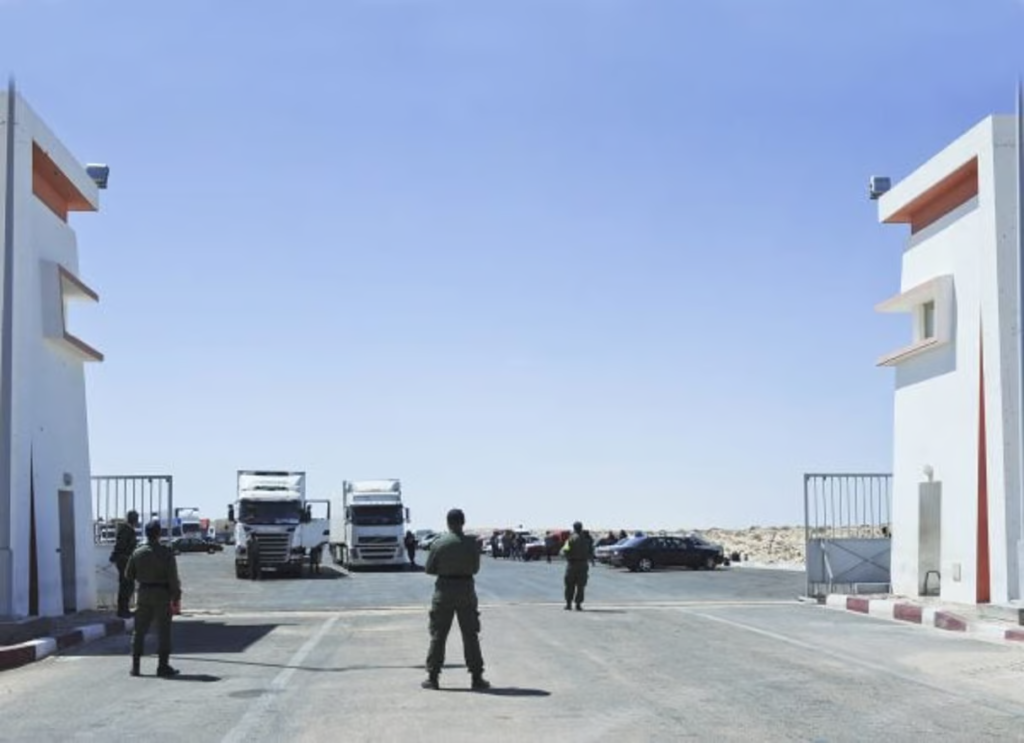
How to get to Dakhla
Once on Moroccan territory, there are 370 km to Dakhla. Depending on your initial means of transport, there are several options for this final stretch.
Option 1: Moussaveir bus + CTM coach (Supratours) to Dakhla
A reliable and economical option is to take the Supratours buswhich departs daily from Guerguerat at 9am and arrives in Dakhla at 3pm. Tickets cost 200 dirhams (around €18).
The advantage of this option is that the Moussavir bus drops you off directly at the Moroccan border, allowing you to cross the border on foot, without getting stuck in the queue of vehicles waiting to be checked.
Once the formalities have been completed, you can board the CTM (Supratours) bus and continue on your way.
Option 2: Collective cab to Dakhla

The alternative to the bus is the shared cab, which offers greater flexibility.
At the border, some Moroccan cabs are waiting for passengers to make the journey to Dakhla. Finding a seat may take a little patience, but once you’re settled in, the journey is quicker than the bus.
Drivers usually wait until the car is full before setting off, which can delay departure. Once underway, however, the journey takes around 4 hours.
Prices vary according to negotiation, but on average, you should expect to pay €40 (around 450 dirhams).
Practical tips for a smooth passage
If you plan to cross this border, here are a few recommendations:
- Bring cash: Exchange rates at border crossings are not always advantageous.
- Photocopy your documents: Some checkpoints require an identity card with your details. Having several copies of your passport can save time.
- Please note the timetable: the border closes at 6 p.m. and customs officers take a break at around 1:30 p.m., which can slow down the crossing.
- Be prepared to answer questions: When you arrive in Morocco, the authorities may ask about your itinerary, your place of accommodation and the length of your stay.

Conclusion: which option to choose?
The choice of transport depends on your preferences in terms of comfort, speed and budget.
- Do you have a car? Make sure you have all the necessary documents, and be patient when scanning them at the border.
- Want an economical, organized trip? The CTM bus (Supratour) is the best option.
- Would you prefer more flexibility and a quick trip? A shared cab is the ideal solution, but you may have to negotiate the price.
Whichever route you choose, it’s sure to be a unique experience, with desert landscapes, lively border crossings and unlikely encounters. Once you’ve reached Dakhla, the Moroccan adventure can begin!
Have you made this journey before? Share your experience in comments!
Looking for an hotel in Nouadhibou ?
✅Choose the Hôtel Prestige the best address for an even more pleasant… and economical stay.
✅ Book now and take advantage of our exceptional offers.
✅ Check availability and find the room that suits your needs.
📩 Need more help? Consult our booking guide or contact our team, who are always ready to help.
Hotel Prestige awaits you!


